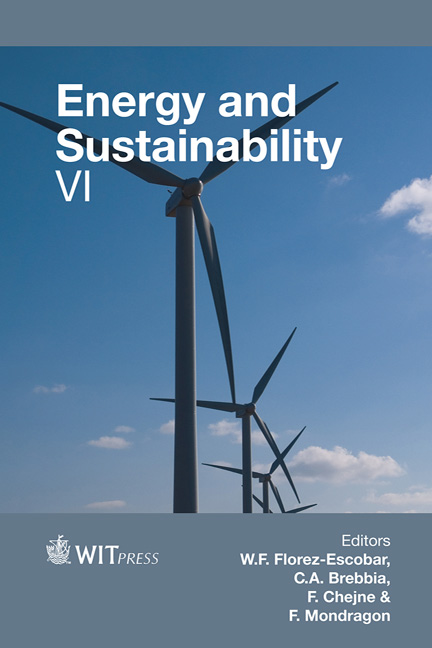Preliminary Results Of The Atmospheric Leakage Dispersion Modeling Of The Brazilian CO2 Pilot
Price
Free (open access)
Transaction
Volume
195
Pages
12
Page Range
391 - 402
Published
2015
Size
970 kb
Paper DOI
10.2495/ESUS150331
Copyright
WIT Press
Author(s)
A. Moreira, J. C. Almeida, S. Oliveira, W. Nakaema, E. Landulfo, F. Rosario, A. P. Musse, M. Bruno, S. Correa
Abstract
The Brazilian CO2 Pilot Project was started off in 2012 in Florianopolis, SC, at a 6,280 m2 experimental cell located at the Ressacada Farm, Santa Catarina Federal University (UFSC), fully sponsored by PETROBRAS Research Center (CENPES). This pioneer initiative was carried out as a technical cooperation among CENPES, the Brazilian Academy and international researchers, to provide field infrastructure for carbon dioxide simultaneous detection in the open environment, encompassing the atmosphere, subsurface and soil. The project goals are to deploy, test and assess the multiple measurement tools simultaneously deployed on site during CO2 controlled releases. These methodologies are likely to be applied in future large scale carbon sequestration sites. This work presents the initial results of the atmospheric dispersion modeling studies and an overview of the atmospheric measurements carried out in the 2013 CO2 controlled release, in which a standard CO2 Eddy Covariance System (ECS) and a CO2 (delta13C) Isotope Gas Analyser (IGA) were deployed to track CO2 in the air. Dispersion studies, currently at an early stage, were carried out using AERMOD 8.8.9. Results showed overall consistent trends, when comparing the outcome from the monitoring set as well as when confronting model output with experimental data.
Keywords
geological carbon sequestration, CO2 controlled release, atmospheric dispersion modelling, Eddy covariance, isotopic measures





